This article was medically reviewed by Pradeep Adatrow, DDS, MS. Dr. Pradeep Adatrow is the only board certified Dentist, Periodontist, and Prosthodontist in the southern United States. With over 15 years of experience, Dr. Adatrow specializes in dental implants, TMJ treatments, periodontal plastic surgery, surgical and non-surgical periodontics, bone regeneration, laser treatments, and soft tissue and gum graft procedures. He received a BS in Epidemiology and Biostatistics from the University of Alabama and earned his Doctor of Dental Surgery (DDS) degree from the University of Tennessee College of Dentistry. Dr. Adatrow then completed a three-year postgraduate program in periodontics and implantology at Indiana University and went on to complete another three-year postdoctoral program in advanced prosthodontics from the University of Tennessee. He also serves as a full-time professor and the Director of Surgical Prosthodontics at the University of Tennessee. Dr. Adatrow received the Dean's Junior Faculty Award and the John Diggs Faculty Award, and he was inducted into the Deans Odontological Society. He is board certified by the American Board of Periodontology and is a Fellow of the prestigious International College of Dentistry – a feat that only 10,000 others worldwide can claim.
There are 10 references cited in this article, which can be found at the bottom of the page.
wikiHow marks an article as reader-approved once it receives enough positive feedback. This article has 20 testimonials from our readers, earning it our reader-approved status.
This article has been viewed 1,330,000 times.
Temporomandibular Joint Disorder (TMD) is characterized by pain, tenderness, and compromised movement of the temporomandibular joints (TMJ) and muscles of mastication that open and close the mouth. These joints, located in front of the ears, attach the lower jaw to the skull and control mouth movement. Treatment usually starts by managing pain by addressing and managing sources of stress and tension because TMJ dysfunction is largely a psychophysiological condition. Cognitive-behavioral therapy, dietary guidelines, analgesics, cold packs and local physiotherapy such as jaw exercises. By performing jaw exercises that improve mobility and that strengthen and relax the jaw, you can increase blood flow and oxygen to the joints, easing TMD symptoms such as jaw clicking. While TMD cannot be cured, these exercises will help you manage your TMD effectively so you can live your daily life.[1]
Things You Should Know
- Press 2 fingers gently under your chin and open and close your mouth to strengthen your jaw.
- Keep your teeth slightly apart when your mouth is at rest to relax your jaw.
- Put a chopstick between your teeth and move your teeth forward, back, and side to side to increase jaw mobility.
Steps
Strengthening Your Jaw
-
1Apply resistance while opening your mouth. Strengthening your jaw will help alleviate TMD symptoms. Place two fingers under your chin and press gently, applying a little resistance, while opening your mouth. Perform this exercise six times per session, six sessions per day.[2]
- Never persevere through any exercise that is painful or uncomfortable, especially when applying resistance. If your pain is acute, seek advice from your dentist or doctor.
-
2Apply resistance while closing your mouth. Open your mouth, and place two fingers under your bottom lip. Press gently, applying a little downward resistance, while closing your mouth. This will help strengthen your jaw muscles to ease your TMD. Perform this exercise six times per session, six sessions per day.Advertisement
-
3Perform chin tucks. With good posture, pull your chin straight back towards your chest, as if trying to make a double chin. Hold this chin tucked position for three seconds. This helps build the muscles surrounding your TMJ, taking some pressure off the joint. Repeat this exercise 10 times per day.
Relaxing Your Jaw
-
1Keep your teeth slightly apart as often as you can. This will relieve the pressure on your jaw. Put your tongue between your teeth to control clenching or grinding during the day. As you go off to sleep try to consciously relax your jaw and don't clench your teeth shut. Ask your dentist about wearing a mouth guard as well.[3]
-
2Open and close your jaw. Hold your tongue on the roof of your mouth as you slowly open and close your jaw. Relaxing the jaw will release tension and is a necessary part of any routine that also involves strength training. Place your tongue on the roof of your mouth just behind your front teeth. Drop your jaw, allowing the muscles to relax. No need to hold this open position, simply repeat this exercise six times per session, six sessions a day.
-
3Try “goldfish exercises.” While goldfish aren’t stretching their jaws when they mouth, so-called goldfish exercises can release tightness in your TMJ. Place two fingers on your TMJ joint (you can localize it by where you feel the most discomfort at the hinge of your jaw near your ear.) Then, place one finger from your other hand on your chin. Drop your mouth open, while applying light pressure against the TMJ. Repeat this exercise six times per session, six sessions per day.[4]
- Don’t apply resistance to your chin when you open your mouth. This exercise is to relax the jaw, not strengthen.
-
4
-
5Breathe to release tension. Stress can cause you to clench your jaw, which can in turn aggravate TMD. Practice breathing in slowly through your nose for five seconds, while releasing the tension in your jaw completely. When you breathe out, also for five seconds, try to relax your jaw even further, really concentrating on slackening each muscle you use to chew. You can perform this exercise as often as you like.[7]
Increasing Jaw Mobility
-
1Place an item between your teeth to exercise your jaw with a forward motion. Place an item of 1/4-1/2 inch or 1/2-1 1/3 cm thickness, such as a tongue depressor or a chopstick, between your top and bottom teeth. Orient the object such that the length of it is sticking out in front of you, rather than out of the sides of your mouth. Now, shift your bottom jaw forward to try to point the object towards the ceiling. When you master one object comfortably, gradually increase the thickness to give you greater range of motion.[8]
- Try to select an object that is made to go in the mouth, such as those indicated above. Other household objects may accidentally chip your teeth during the exercise, if you are not careful.
- Perform this exercise as needed when you feel you need more mobility in your jaw, such as before a meal.
-
2Place an item between your teeth to exercise your jaw side to side. Place your 1/4-1/2 inch or 1/2-1 1/3 cm item between your top and bottom teeth again, but this time, place it horizontally. Move your bottom teeth from side to side rather than up and down. This will help increase your lateral jaw mobility.[9]
- Perform this exercise as needed in response to pain or when you feel you need more jaw mobility.
-
3Improve your posture.[10] Many people carry their heads slightly forward when they walk. This brings the spine out of alignment, aggravating TMD. Stand against a wall and tuck your chin, bringing your jaw to your chest, while pressing your shoulder blades together behind your back. This stretches the spine into a more neutral position that can alleviate TMD symptoms and increase jaw mobility.[11]
Jaw Exercises and Posture Tips for TMD
Expert Q&A
Did you know you can get expert answers for this article?
Unlock expert answers by supporting wikiHow
-
QuestionHow do you get rid of jaw pain?
 Pradeep Adatrow, DDS, MSDr. Pradeep Adatrow is the only board certified Dentist, Periodontist, and Prosthodontist in the southern United States. With over 15 years of experience, Dr. Adatrow specializes in dental implants, TMJ treatments, periodontal plastic surgery, surgical and non-surgical periodontics, bone regeneration, laser treatments, and soft tissue and gum graft procedures. He received a BS in Epidemiology and Biostatistics from the University of Alabama and earned his Doctor of Dental Surgery (DDS) degree from the University of Tennessee College of Dentistry. Dr. Adatrow then completed a three-year postgraduate program in periodontics and implantology at Indiana University and went on to complete another three-year postdoctoral program in advanced prosthodontics from the University of Tennessee. He also serves as a full-time professor and the Director of Surgical Prosthodontics at the University of Tennessee. Dr. Adatrow received the Dean's Junior Faculty Award and the John Diggs Faculty Award, and he was inducted into the Deans Odontological Society. He is board certified by the American Board of Periodontology and is a Fellow of the prestigious International College of Dentistry – a feat that only 10,000 others worldwide can claim.
Pradeep Adatrow, DDS, MSDr. Pradeep Adatrow is the only board certified Dentist, Periodontist, and Prosthodontist in the southern United States. With over 15 years of experience, Dr. Adatrow specializes in dental implants, TMJ treatments, periodontal plastic surgery, surgical and non-surgical periodontics, bone regeneration, laser treatments, and soft tissue and gum graft procedures. He received a BS in Epidemiology and Biostatistics from the University of Alabama and earned his Doctor of Dental Surgery (DDS) degree from the University of Tennessee College of Dentistry. Dr. Adatrow then completed a three-year postgraduate program in periodontics and implantology at Indiana University and went on to complete another three-year postdoctoral program in advanced prosthodontics from the University of Tennessee. He also serves as a full-time professor and the Director of Surgical Prosthodontics at the University of Tennessee. Dr. Adatrow received the Dean's Junior Faculty Award and the John Diggs Faculty Award, and he was inducted into the Deans Odontological Society. He is board certified by the American Board of Periodontology and is a Fellow of the prestigious International College of Dentistry – a feat that only 10,000 others worldwide can claim.
Board Certified Dentist & Oral Surgeon
-
QuestionWhat makes TMD worse?
 Pradeep Adatrow, DDS, MSDr. Pradeep Adatrow is the only board certified Dentist, Periodontist, and Prosthodontist in the southern United States. With over 15 years of experience, Dr. Adatrow specializes in dental implants, TMJ treatments, periodontal plastic surgery, surgical and non-surgical periodontics, bone regeneration, laser treatments, and soft tissue and gum graft procedures. He received a BS in Epidemiology and Biostatistics from the University of Alabama and earned his Doctor of Dental Surgery (DDS) degree from the University of Tennessee College of Dentistry. Dr. Adatrow then completed a three-year postgraduate program in periodontics and implantology at Indiana University and went on to complete another three-year postdoctoral program in advanced prosthodontics from the University of Tennessee. He also serves as a full-time professor and the Director of Surgical Prosthodontics at the University of Tennessee. Dr. Adatrow received the Dean's Junior Faculty Award and the John Diggs Faculty Award, and he was inducted into the Deans Odontological Society. He is board certified by the American Board of Periodontology and is a Fellow of the prestigious International College of Dentistry – a feat that only 10,000 others worldwide can claim.
Pradeep Adatrow, DDS, MSDr. Pradeep Adatrow is the only board certified Dentist, Periodontist, and Prosthodontist in the southern United States. With over 15 years of experience, Dr. Adatrow specializes in dental implants, TMJ treatments, periodontal plastic surgery, surgical and non-surgical periodontics, bone regeneration, laser treatments, and soft tissue and gum graft procedures. He received a BS in Epidemiology and Biostatistics from the University of Alabama and earned his Doctor of Dental Surgery (DDS) degree from the University of Tennessee College of Dentistry. Dr. Adatrow then completed a three-year postgraduate program in periodontics and implantology at Indiana University and went on to complete another three-year postdoctoral program in advanced prosthodontics from the University of Tennessee. He also serves as a full-time professor and the Director of Surgical Prosthodontics at the University of Tennessee. Dr. Adatrow received the Dean's Junior Faculty Award and the John Diggs Faculty Award, and he was inducted into the Deans Odontological Society. He is board certified by the American Board of Periodontology and is a Fellow of the prestigious International College of Dentistry – a feat that only 10,000 others worldwide can claim.
Board Certified Dentist & Oral Surgeon Excess stress can also be a contributing factor for TMD. Get plenty of exercise and practice meditation, yoga or other relaxation techniques to reduce stress. Additionally, clenching your jaw and grinding your teeth may cause or worsen symptoms of TMD. See your dentist to get fitted for a mouth guard if you suffer from jaw clenching or teeth grinding.
Excess stress can also be a contributing factor for TMD. Get plenty of exercise and practice meditation, yoga or other relaxation techniques to reduce stress. Additionally, clenching your jaw and grinding your teeth may cause or worsen symptoms of TMD. See your dentist to get fitted for a mouth guard if you suffer from jaw clenching or teeth grinding. -
QuestionDo jaw exercises help TMJ?
 Pradeep Adatrow, DDS, MSDr. Pradeep Adatrow is the only board certified Dentist, Periodontist, and Prosthodontist in the southern United States. With over 15 years of experience, Dr. Adatrow specializes in dental implants, TMJ treatments, periodontal plastic surgery, surgical and non-surgical periodontics, bone regeneration, laser treatments, and soft tissue and gum graft procedures. He received a BS in Epidemiology and Biostatistics from the University of Alabama and earned his Doctor of Dental Surgery (DDS) degree from the University of Tennessee College of Dentistry. Dr. Adatrow then completed a three-year postgraduate program in periodontics and implantology at Indiana University and went on to complete another three-year postdoctoral program in advanced prosthodontics from the University of Tennessee. He also serves as a full-time professor and the Director of Surgical Prosthodontics at the University of Tennessee. Dr. Adatrow received the Dean's Junior Faculty Award and the John Diggs Faculty Award, and he was inducted into the Deans Odontological Society. He is board certified by the American Board of Periodontology and is a Fellow of the prestigious International College of Dentistry – a feat that only 10,000 others worldwide can claim.
Pradeep Adatrow, DDS, MSDr. Pradeep Adatrow is the only board certified Dentist, Periodontist, and Prosthodontist in the southern United States. With over 15 years of experience, Dr. Adatrow specializes in dental implants, TMJ treatments, periodontal plastic surgery, surgical and non-surgical periodontics, bone regeneration, laser treatments, and soft tissue and gum graft procedures. He received a BS in Epidemiology and Biostatistics from the University of Alabama and earned his Doctor of Dental Surgery (DDS) degree from the University of Tennessee College of Dentistry. Dr. Adatrow then completed a three-year postgraduate program in periodontics and implantology at Indiana University and went on to complete another three-year postdoctoral program in advanced prosthodontics from the University of Tennessee. He also serves as a full-time professor and the Director of Surgical Prosthodontics at the University of Tennessee. Dr. Adatrow received the Dean's Junior Faculty Award and the John Diggs Faculty Award, and he was inducted into the Deans Odontological Society. He is board certified by the American Board of Periodontology and is a Fellow of the prestigious International College of Dentistry – a feat that only 10,000 others worldwide can claim.
Board Certified Dentist & Oral Surgeon
References
- ↑ http://www.webmd.com/oral-health/guide/temporomandibular-disorders-tmd
- ↑ http://www.healthline.com/health/tmj-exercises#Overview1
- ↑ http://www.webmd.com/oral-health/guide/temporomandibular-disorders-tmd#3
- ↑ http://www.healthline.com/health/tmj-exercises#Exercise2
- ↑ Pradeep Adatrow, DDS, MS. Board Certified Dentist & Oral Surgeon. Expert Interview. 30 September 2020.
- ↑ http://www.healthline.com/health/tmj-exercises#other-treatments3
- ↑ http://tanenbaumtmj.com/2015/04/28/7-at-home-treatments-for-tmj-painful-jaw-muscles/
- ↑ http://sovanightguard.com/blog/8-jaw-exercises-to-relieve-tmj-pain/
- ↑ https://health.clevelandclinic.org/stubborn-tmj-pain-try-trigger-point-massage-and-jaw-exercises/
- ↑ Pradeep Adatrow, DDS, MS. Board Certified Dentist & Oral Surgeon. Expert Interview. 30 September 2020.
- ↑ http://www.petoskeynews.com/news/health/maximizing-your-mobility-if-you-have-jaw-pain-chew-on/article_e173b63a-519b-5749-8c9a-74ef19bf2887.html
About This Article
To treat temporomandibular joint disorder, try performing jaw exercises to strengthen your jaw and improve its mobility, which will help you manage the pain and tension. For example, try pushing gently against your chin with 2 fingers as you open your mouth 6 times, which will help strengthen your jaw. Additionally, push down gently with 2 fingers on the inside of your lip as you close your mouth. Then, pull your chin back towards your chest 10 times a day to strengthen the muscles surrounding your jaw. For tips from our Medical co-author on how to exercise your jaw side-to-side, read on!
-with-Jaw-Exercises-Step-1.webp)
-with-Jaw-Exercises-Step-2.webp)
-with-Jaw-Exercises-Step-3.webp)
-with-Jaw-Exercises-Step-4.webp)
-with-Jaw-Exercises-Step-5.webp)
-with-Jaw-Exercises-Step-6.webp)
-with-Jaw-Exercises-Step-7.webp)

-with-Jaw-Exercises-Step-8.webp)
-with-Jaw-Exercises-Step-9.webp)
-with-Jaw-Exercises-Step-10.webp)
-with-Jaw-Exercises-Step-11.webp)
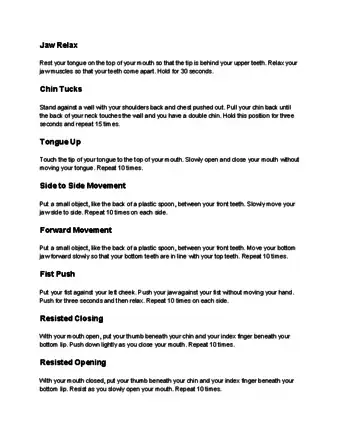
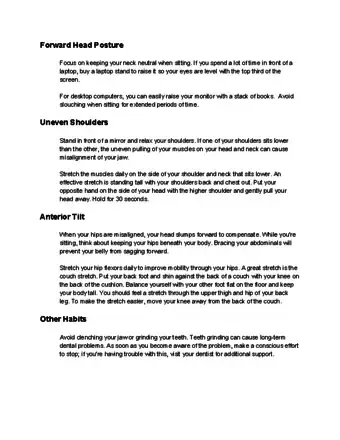
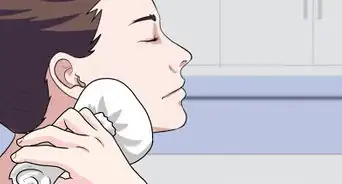


-Step-20-Version-2.webp)
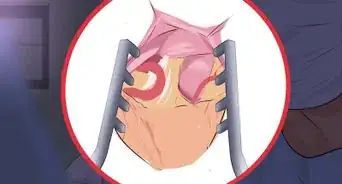
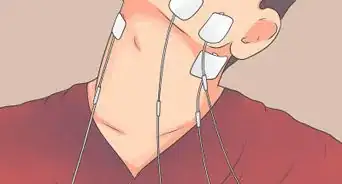

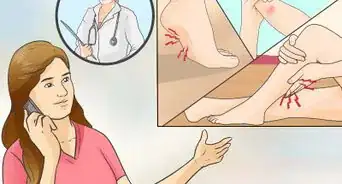



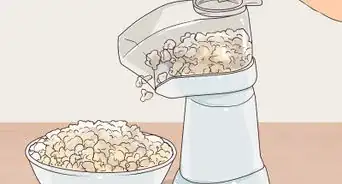









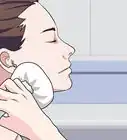
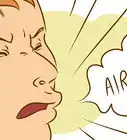

-Step-20-Version-2.webp)



































Medical Disclaimer
The content of this article is not intended to be a substitute for professional medical advice, examination, diagnosis, or treatment. You should always contact your doctor or other qualified healthcare professional before starting, changing, or stopping any kind of health treatment.
Read More...